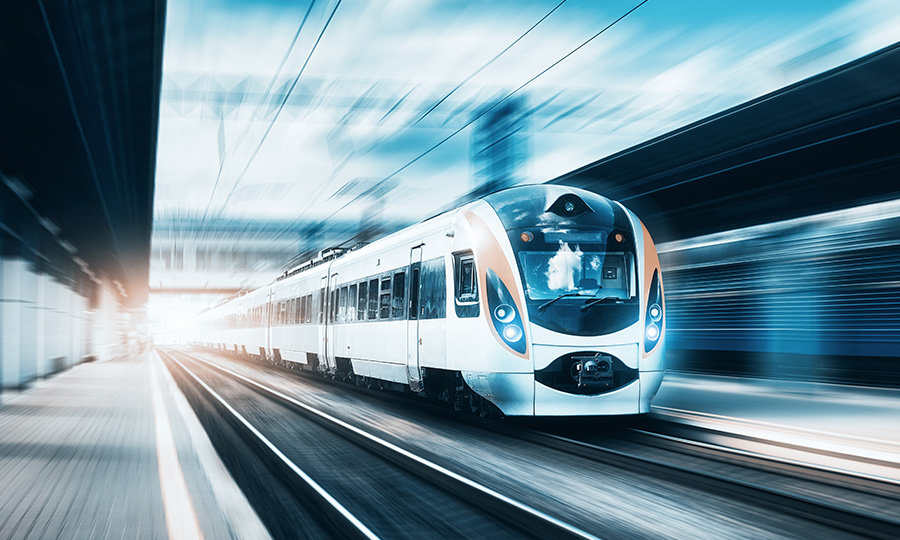Effective utilization of regenerative energy in railways and subways

Target Industry
- 【Manufacturing】Railroad / Subway vehicle manufacturer
- 【Manufacturing】Tram maker, Car maker
- 【Manufacturing】Elevator manufacturer
Background and Challenges
In recent years, energy saving has been called for due to environmental problems, and the railway industry is also developing with a view to improving the efficiency of converters, reducing the weight of vehicles, and making them electric (EV) in the future.
However, there are limits to the efficiency of converters and the weight reduction of rolling stock, and it is essential to develop batteries suitable for the Japanese railway industry, which mainly uses large rolling stock, for EV conversion. It is said that it is not realistic on the railway.
Therefore, the "energy regeneration device" is attracting attention and being introduced for the effective use of energy.
Regenerative energy is the energy generated by converting the kinetic energy of a railroad vehicle during deceleration into electrical energy, and is normally discarded energy.
In the railway industry, the introduction of regenerative systems that effectively utilize the energy that would otherwise be wasted is progressing. And it is the energy storage technology that makes this possible, and it is a device equipped with a energy storage medium.
In addition, the merit of introducing a regenerative device is not only the effective use of energy, but also the purpose of suppressing the voltage rise of the overhead wire due to the energy during braking.
Currently installed storage media include lithium-ion batteries, electric double-layer capacitors (EDLC), and our Hybrid Super Capacitors (HSC).
Since the equipment is installed in Japanese railway stations or substations, it is important to reduce its size and weight, and because the overhead line voltage is high, safety is also a major issue.
Railways have the characteristic that vehicles are constantly moving and are repeatedly accelerating and decelerating.
Therefore, railway energy regenerative equipment requires a power storage medium that can efficiently charge and discharge by utilizing and suppressing voltage fluctuations in a short cycle.
In this respect, Hybrid Super Capacitors have lower impedance than lithium-ion batteries, making them suitable for short-cycle charging and discharging. Also, in terms of miniaturization and weight reduction, it has the characteristic of being easy to miniaturize due to its high energy density.
Technical Advantages of Hybrid Super Capacitors (HSC)
We will build an energy regeneration system that stores energy during railway deceleration and uses the stored energy during acceleration. By instantly storing energy that is generated frequently and irregularly, the stored energy can be used at the required timing.
High Operating Voltage
- It supports the instantaneous energy transfer by large currents that cannot be achieved with lithium-ion batteries with its high impedance.
- High voltage can be supported by connecting a maximum of 48 series modules in series and parallel at a cell voltage of 3.8V.
- It is possible to reduce the number of mounted units by 30% compared to EDLC (cell voltage 2.7V).
High Energy Density
- Compared to EDLC, it has a higher energy density and can be made smaller and lighter.
Ideal for short cycle fluctuations
- Smooths sudden current fluctuations due to acceleration and deceleration, reduces DC voltage fluctuations, and stabilizes power.
- Since the internal resistance is smaller than that of a lithium-ion battery, it is possible to cope with short-period fluctuations and the short-period deterioration is small.
Energy Storage Device Comparison
| Hybrid Super Capacitor (HSC) | Lithium Ion Battery (LIB) | Electric Double Layer Capacitor (EDLC) | Lead-acid Battery | |
|---|---|---|---|---|
| Voltage | ◎ | ◯ | △ | △ |
| Energy density | ◯ | ◎ | △ | ◯ |
| Safety | ◯ | △ | ◯ | ◯ |
| Lifespan | ◎ | △ | ◯ | △ |
